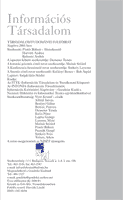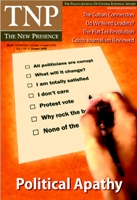

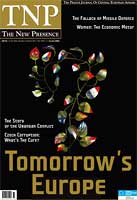
It seems that the world economy will soon be run predominantly by women. Today, there are already numerous indicators which suggest that this may well become the case.
More...
Keywords: Baltic States; international business; internationalization; Estonia; Latvia; Lithuania
A relatively high percentage of Baltic corporations have already started their operations abroad, over 0% of the companies studied. It is surprising that the approaching EU membership does not seem to e he driving force of the Baltic corporations’ internationalization, though the EU is clearly the major xport destination. The empirical evidence shows that the operations of the Baltic companies in foreign arkets, have concentrated on the ex-CMEA countries, especially on the former USSR. The empirical ata indicates that most of the operations abroad are related to marketing, such as the foundation of heir own representative office or their own sales unit in a foreign market.
More...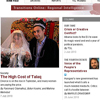
Keywords: Roma; Romania; Kalderash; marriage; widow; Romani tradition; virginity; violence; rape; taboo; EU criticism; law; Romani groups; Baroness Emma Nicholson; human rights; Union of Roma Christians in Romania; UNICEF;
One family of Kalderash Roma speaks out against the custom of early marriage.
More...
Keywords: private museum; Ier Valley; regional etnography; multiethnic cohabitation; identity; specificity; communism; official history and ethnography; peasant museum;
In 2002 doctor Kéri Gáspár inaugurated in Galoşpetreu, his native village, the first private museum representing the area of the Ier Valley. This initiative stands for Kéri Gáspár’s attempt to elaborate a local development programme by making recourse to both old objects and his knowledge of history and regional ethnography.
More...
Keywords: private exhibition; Momârlani; identity; heritage salvation; culture preservation; traditional culture; costume;
In 2004 Elena Mălinesc and Petru Gălăţean opened the Momârlan’s Museum in the village of Slătinioara, suburbia of Petroşani City that spreads on one side of the Parâng Mountains. The name of the museum suggests what its owners aimed to achieve the reconstruction of the life of Momârlani, the ‘native’ population in the area. The origin of the word ‘momârlan’ is ambiguous, but the Momârlani consider themselves the remnants of the indigenous Dacian population and defined their identity in relation to the ‘barabele’, the foreigners who settled down the Valley once with the opening of coal mines during the Habsburg domination. Nevertheless, it is particularly recently that the Momârlani have restarted to decline their identity and specificity. and capitalise on their heritage.
More...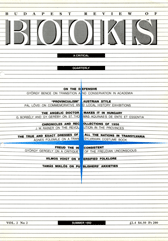
Keywords: oral communication; self-correction; reformulation
The interlocutors’ co-presence in oral communication provides them with the opportunity to have access to peer referents and to make linguistic or nonlinguistic choices in order to make themselves better understood. Due to the fact that oral discourse is not planned in advance, having a spontaneous progress, the speakers are allowed to use self-corrections, reformulations and repetitions in order to make their message more effective. Drawing on a corpus of (recorded and transcribed) negotiations, the paper aims to exemplify these specific traits of oral communication.
More...Keywords: economy, population, productivity, economic growth, research, innovation.
Economy - is the sum of population activities and economic progress is due to the innovative ideas of individuals from that population. Competition in innovation domain is driven by the desire for financial gain. As the private economy is driven by the desire to make profit, in the same way innovation is motivated by consistent income that may occur. The applying of innovations in economy brings benefits for all, including for those who do not innovate or do not work in innovative sectors. For a country to have a competitive economy it must produce itself applied knowledge and not to wait to get, to buy innovation from outside. Consequently, the necessary conditions for innovation must be provided: access to performant education, encouraging competition by rewarding achievements, and all these can happen only in a developed society. Romania has made huge efforts after the 2nd World War to overcome the economic backwardness, the lacking element at that time being the owned technology. Later, in '80 the deficient element, but not only in Romania, but in all European communist countries, became creativity, its lack of performance due to the lack of wisdom of the leaders of these countries - lack of wisdom due to poor education, lack of higher and university education - that would have opened their horizons for understanding economic phenomena, for relations between the economic development and social aspects etc.. Raising people’s income is possible only by increasing productivity. Always those working in the field of high technology, those having the highest qualification, have had the highest productivity and of course the highest wages. Even now those working in the innovative areas have the highest salaries. For example, those who work at Apple, IBM and Microsoft, have salaries over $ 100,000. Romania should also learn from the experience of other countries that have developed innovative areas, that allow sustainable development not only to the economy but also to social, and care for the natural environment.
More...Keywords: competitiveness; appropriateness; quality; strategy; success.
Under various aspects - geographical position, traditions, culture, religion Romania has always been part of the European arena, but once we joined European Union, the Romanian market has “officially” become a component of the unique European market. The business market, on national and international level, represents a very complex frame that can be capitalized. The condition is for the economic agents to correctly infer the characteristics of this environment, the risks and its development perspective. Is true that production represents the ground of the whole commercial relation system, but the growth of national production competitiveness means at first, quality, as well as the development of marketing capacity. Nowadays production methods, the characteristics of commercial politics on national level, the tendencies on business market on a global level are only a few of the meanings imposed by the development of international relations. Moreover, national companies are in direct competition with those of the EU member states and the growth of their competitiveness is a major vector of the effective integration process. The environment based on competition suffers continuously structural changes and the economic agents must be aware of the competition discipline that suppose pursuing the balance between the orientation toward customer and toward competition, by promoting a modern management and marketing, while the maximization profit actions do not generate practices against competition. It is imperative to comply with common “aquis” in the competition area and with the national settlements in domain as well, which implies additional expenses for companies, that will be definitely included in the final price of Romanian products, and which will point more obviously, the competition pressure exerted by common products. This paper analyzes the complexity of the correlation between competition and international commercial relationship, in the context of the exigency that the external market implies.
More...
Keywords: Catherine Ashton; EU; Minsk; Vyasna Human Rights Center; Belarus; Amnesty International; Byalyatski; Petr Necas; Armenia; orphanages; Russia; stray dos; Atambaev; Bohemia Interactive; Vaclav Klaus; Central Asia;
Plus, Czech top brass plead on behalf of jailed ‘spies’ and the Russians who get a kick out of poisoning stray dogs. Around the Bloc is TOL's daily digest of the important, the trivial, the tragic, the weird, and the sober from its coverage region.
More...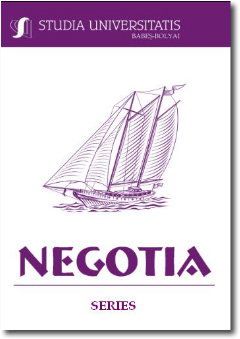
Keywords: exports; foreign direct investment; Romania.
This paper investigates the relationship between a country’s exports and foreign direct investment (FDI) by transnational corporations, with a focus on Romania. First, we lay out the theoretical background concerning the manner in which FDI shapes a country’s exports. Then, we give a short overview on the recent evolution of Romania’s foreign trade, highlighting sectors in which Romania has revealed a comparative advantage. Further, we take into consideration the increase of inward FDI and its main destinations within the Romanian economy. The influence of FDI on the competitiveness of Romanian exports is then analyzed in detail, employing correlation instruments. The findings lead us to the conclusion that from a statistical point of view, exports and inward FDI are not correlated in the case of Romania. Finally, we make some suggestions and policy recommendations both for attracting FDI and for stimulating the competitiveness of Romanian exports.
More...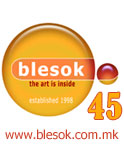
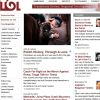
Keywords: Poland; Central-Eastern Europe; film; Andrzej Wajda; Katyn; Wojciech Smarzowski; Rose; drama; The Best Picture award; Essential Killing; Jerzy Skolimowski; Borys Lankosz’s The Reverse; history; regional cinema;
Filmmakers are using life as it was lived to fill in the gaps in presentations of the country’s modern history.
More...Keywords: transferred epithet; figure of speech; stylistic potential; implicit meaning; polyphony; comic effect
This article deals with the transferred epithet which is defined as a figure of speech where the attribute is transferred from the noun it logically belongs to, to another one which it fits grammatically but not logically. In the fictional discourse the transferred epithet shows considerable stylistic potential as it is based on an unconventional co-occurrence of the modifier and the modified noun and the resulting semantic discord which causes the effect of unexpectedness. The ambivalent, amorphous and complex nature of the transferred epithet generates new implicit meanings which enrich and complicate the original meaning. It allows the author to express something that is difficult to convey with standard structures. Such characteristics of transferred epithets as their referential diffusion, the ability to convey emotional and evaluative connotations and their se¬mantic capacity allow using them to create polyphony. The mapping of different mental spaces causes a logical contradiction which leads to a comic effect. The latter is especially vivid when the mental spaces of the body parts or artifacts overlap with mental spaces of human emotional states.
More...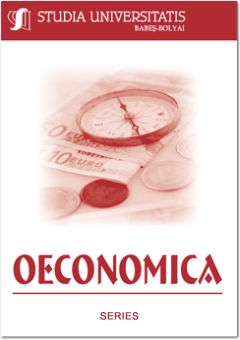
Keywords: comparative advantage; competitiveness; trade; specialization;
The purpose of this paper is to analyze the Romanian’s competitiveness in the light of its external trade. There are a lot of quantitative measures that reveal different facets of the trade competitiveness, but we focused in this article on those regarding the geographical concentration of commercial flows, the intensity of intraindustry flows and the product specialization. All these measures were applied to the case of Romania, indentifying the most competitive traded goods of this country before its admission to the EU. We tried to demonstrate that the so called “low labor cost competitiveness” is a cliché and that this country hat much to offer as a new member of the European Union.
More...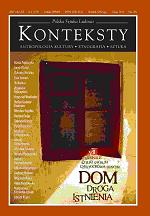

Keywords: plug-in; clip-on; Reyner Banham; Archigram; Metabolism
The architecture concept of plug-in is based on the duality of the infrastructure system and units or elements connected to it. In the context of megastructures, the concept was most vividly characterised by works of Archigram and Japanese Metabolists in the 1960s and early 1970s. Blurring the boundary between the building and the city, the plug-in concept outgrew architectural boundaries and was slowly transformed into an urbanistic concept. The paper presents the cultural context relevant to contemporaneity, which influenced specific development of the technology-driven concept of plug-in in the British Archigram Group and Japanese Metabolists. Based on the aesthetics of change and incompleteness, which was characterised by similar architectural manifestations despite entirely different cultural backgrounds, the plug-in concept foreshadowed social transformation based on freedom, individualisation and mobility in an utopian manner and held a promise of urban development with adaptability to unpredictable needs and desires of residents, who would become its co-creators with an active approach. Although the revolutionary sixties are quite some time behind, the plug-in concept in its commodified form has become and remained operational and relevant at least on the metaphorical level; in the contemporary space it is evident primarily in urbanism and not as much in its original architectural form.
More...